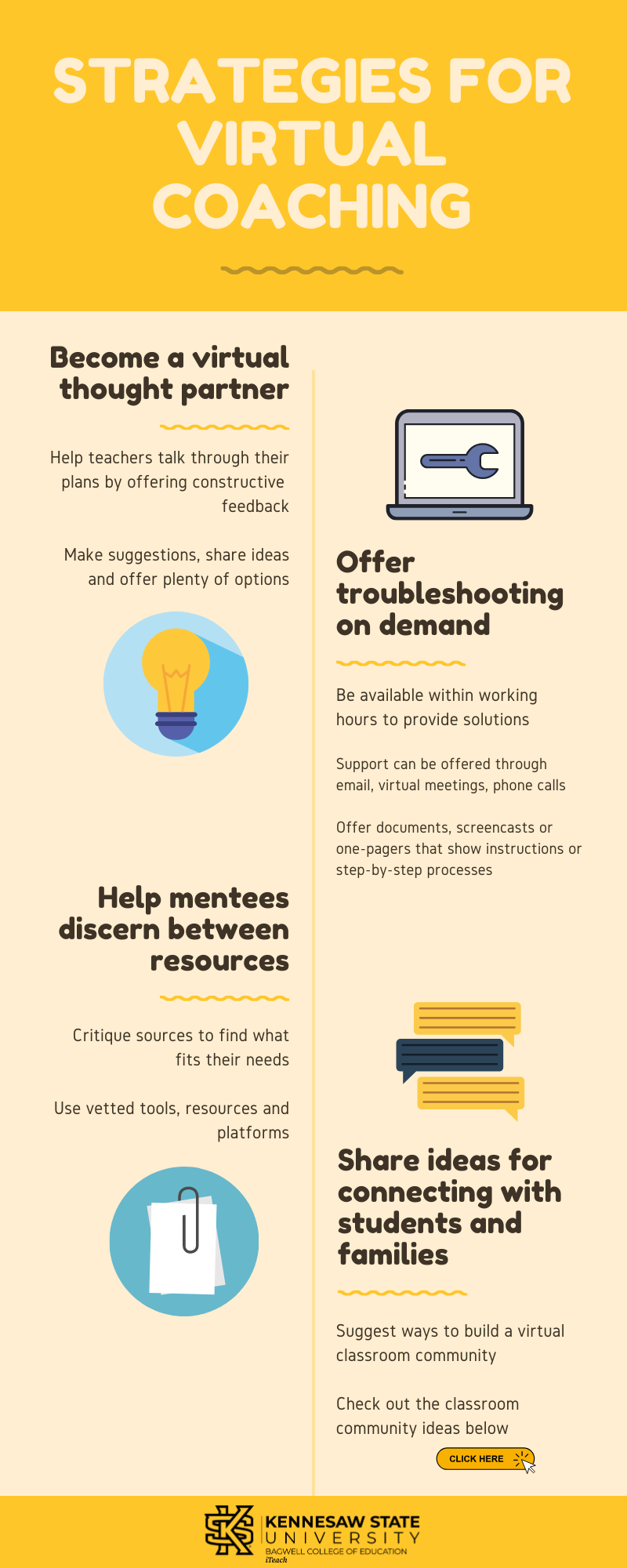Effective Strategies for Virtual Coaching
Coaches, have you ever been in a teacher’s classroom and left feeling like you hadn’t gotten anything accomplished? Sometimes meeting face-to-face can turn away from a focused conversation . These distractions stop us from focusing on creating purposeful coaching experiences. Turning the discussion virtual can keep the tasks for coaches and mentee teachers streamlined and goal-oriented. Now that schools have transitioned to digital learning, it is especially important that coaches are prepared to support teachers virtually. It’s also vital to remain considerate of the social-emotional health of the teachers, students and families we support.
It is helpful to have a model to reference in building a strong coaching support. As a team of instructional technology coaches, we model our coaching based off of best practices from Jim’s Knight Impact Cycle. According to Jim Knight’s Coaching During COVID: 6 Key Takeaways, there are 5 main strategies that you can do to support educators as they shift in their role from classroom to virtual teaching.
Using the impact cycle virtually: Set student-focused goals about engagement.
Positive deviance: Stay connected, and then recreate what has worked well with others.
Elements of remote learning for mentorship programs: Leverage video to record virtual meetings with students and teachers.
Keeping professional learning as a dialogue: Offer support through conversations and guide reflection instead of hosting direct training.
Managing tension and compassion: Be compassionate while teachers are wrapping their heads around their new role.
In our experience, we have found that no two districts, schools, nor teachers are the same. Therefore, virtual coaching will look different for every coach/teacher partnership. For example, some teachers may prefer to have virtual meetings where we brainstorm together and collaborate on various ideas and strategies. Meanwhile, at the same school, another teacher may want to collaborate via a shared document of resources and ideas. Neither way is better than the other. It is all about continuing an effective coaching collaboration and doing what works best for you both.
We’ve put together some ideas that have proven to be effective amongst teachers we support. Check out our Strategies for Virtual Coaching infographic to learn more about making the most out of the virtual coaching process.
A coach should be attentive to supporting teachers’ needs because educators need support now more than ever. Just as classroom teachers adjust their instruction for students, coaches need to adjust their support as well. While coaching looks different in a virtual world, the need is still just as high. If virtual coaching can remain focused on identifying areas of growth, setting goals, and evaluating progress, then it won’t matter the format it takes. Keeping conversations purposeful and remaining understanding will help towards the success of virtual coaching. Being available virtually allows teachers the flexibility and grace to still feel supported, even outside of the traditional brick and mortar school building. Virtual coaching allows you, as the coach, the opportunity to be in many places at once and provide the necessary support to those in need.


